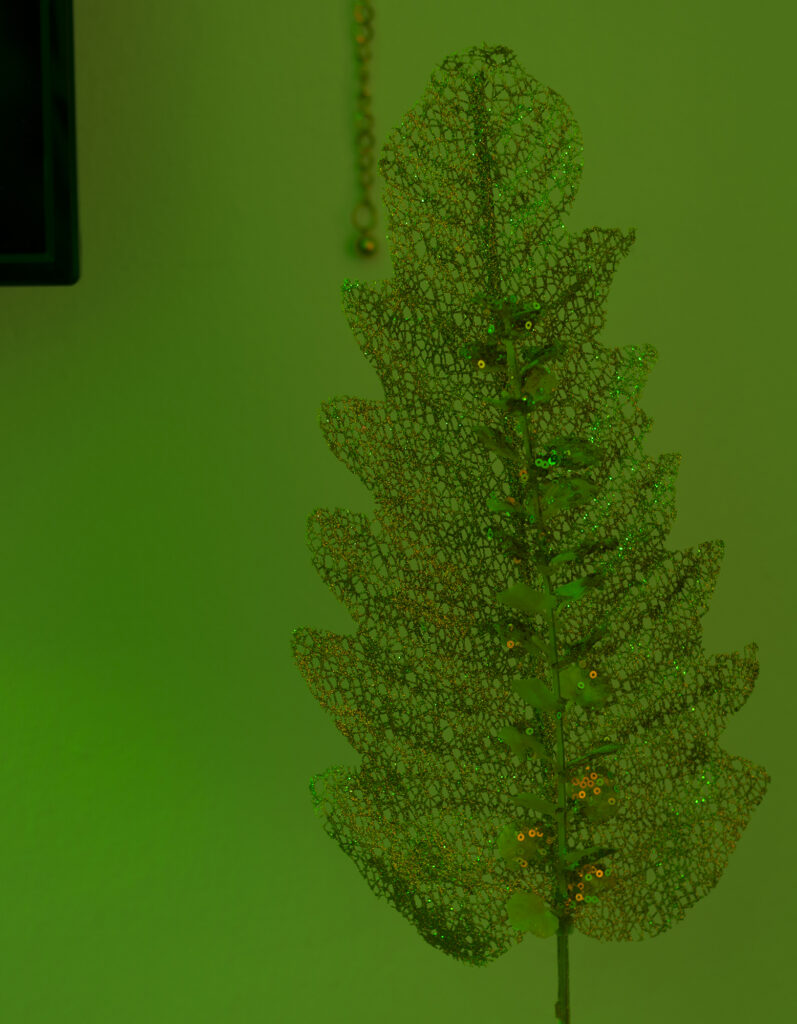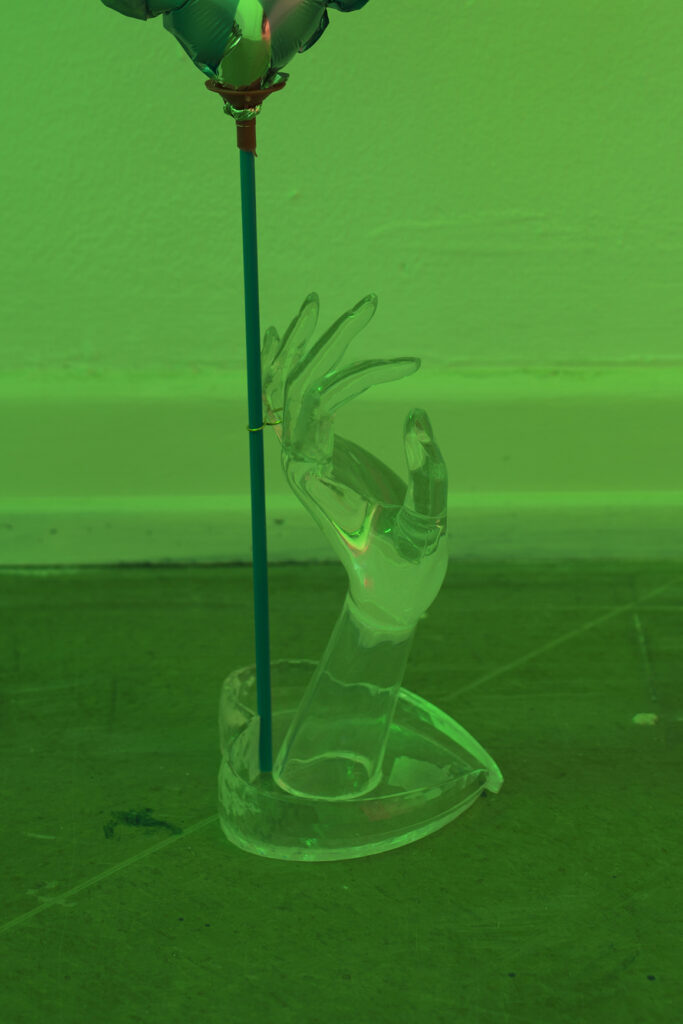curated by Luisa Schlotterbeck
Open the Graves!
Sylbee Kim’s first solo exhibition in Germany Catacombs of Love includes four video works from recent years that approach the concept of love in different ways. Here, love is negotiated as an ambiguous term that is tied to manipulative mechanisms of capitalist system on one hand, and exists as a generic source of human existence on the other. Following the logic of consumerist culture, love is an insatiable desire that arises while confronting or concealing given conditions of life and death and at the same time, it is an actual human need engaging body and mind.
Mélange’s new space is located in the basement and only through two small windows a little bit of daylight gets in. Each window is tinted with color foil and daylight soaks two rooms with a diffuse, flesh-red or green glow. The clarity organically mingles with the ever-changing light emitted from video works.
Specifically conceived for this show, a new wall painting piece formulates Catacombs of Love in black Korean characters––performing a metamorphosis into cuneiform. The video A Sexagesimal Love Letter (2016) is projected over this wall painting, creating hybrid symbols on the wall. Sexagesimal system refers to a number system based on the number 60. Ancient Babylonian cuneiform already expressed numbers in sexagesimal, where the additive value of a symbol depended on its position. This system is still present today in counting 60 seconds for a minute. Kim’s love letter is divided into 59 paragraphs, which, like individual verses, are tied to a common context. They form a monologue-like declaration of love, whose rhythm is audibly marked by a digital signal with a distorted scale. The visual parts of the work were developed exclusively from copyright-free or archive images taken from the Internet. The video negotiates temporality and the order of its things and understands life and death as bodies that move in the depravity of a socio-political universe. With the dance in “§41 together we dance”, the ideology in “§42 together we march” and the end in “§43 to our death”, the artist pointedly emphasizes the terms of power, time, life and mortality in her video. The work is a seemingly dystopian version of contemporary Ars Moriendi; the art of dying well. A Sexagesimal Love Letter was first shown in 2016 at the SeMA Biennale: Mediacity Seoul together with A Little Warm Death (2016) and Sisters in the Plurocratic Universe (2016).
It is not only in this digital codex that the artist succeeds in drawing an invisible line in-between our modes of presence. In the second, smaller room flooded with green light three video works are presented on monitor. First, one can have a glimpse of Altar on the Verge of the Real (2018) through the passage between the two rooms, with its screen adorned with objects, like an altar. The offering consists of various, cheaply produced kitsch elements found by the artist. Two plastic gold chains form a canopy, a balloon in the shape of a kissing pair of dolphins finds its place at the foot. As a further offering, a clumsy 3-D reproduction of a glass hand sprouting out of a heart-shaped ashtray stands there as a “fake of a fake”. The objects, looking like some sort of punk Disney items, have a mood of contemporary amusement park and symbolize meaninglessness that has become a thing itself and all senseless things produced in consumer societies. The video shows a candle and two hands holding a glass bowl of water in front of a pale, morphing moon. The gestures relate to wishful begging to the moon, a traditional practice in Korean folklore. Kim questions what desire for belief means, the role it plays for people and to which extent it creates tension with the measures of modern rationalism. Kim perceives the pursuit of belief in any sense as the core definition of being human. The surface of the moon is a symbolic juncture for different patterns of thought. The work was previously presented in her solo exhibition in Korea Cradle of Regrets (2018), together with Prayers for Emptiness (2018) and Hollow Tombs (2018).
At Mélange, these two works are shown on two monitors sharing a corner. The videos complement each other in image, text and sound and suggest a new perception of death as another methodology for life. The videos share a script that is conveyed either through subtitles or a voice over and edited into different audio and video tracks. Found recordings or field shootings on her mobile phone of things such as pinwheels affectionately made of plastic bottles, various noises and 3D renderings melt together. The scenes are literally green and hint on video postproduction technique of greenscreen, where color green functions as a placeholder for other images. The greenscreen is thus a non-image, a representation of nothing. Playfulness with a somewhat morbid flair and the distinction of the human body from the traditional notion of humanity slowly gets eery. Kim leaves a bitter aftertaste in every work she produces. In these special catacombs, the artist observes increasing inequalities in late capitalist societies and invisibly depicts the possibility of developing imaginary and imaginative approaches.


















